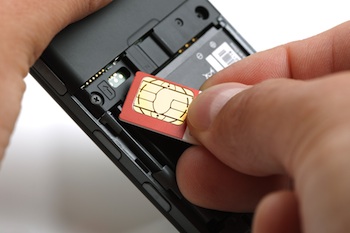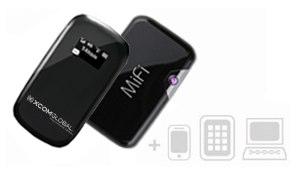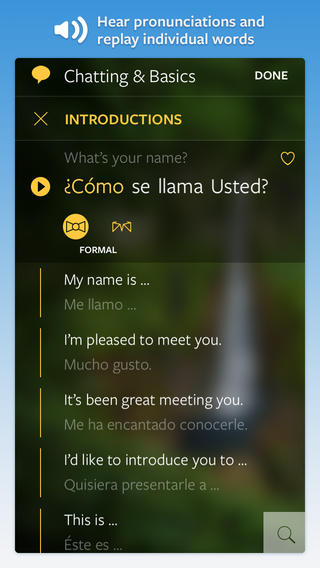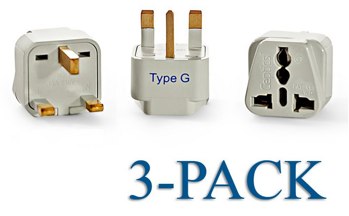 All of that tech we rely on day to day when we're at home can become a real problem when we're overseas: our smartphones become dead weights in our pockets and our laptops lose their shine when we can't find a WiFi connection.
All of that tech we rely on day to day when we're at home can become a real problem when we're overseas: our smartphones become dead weights in our pockets and our laptops lose their shine when we can't find a WiFi connection.
Of course, we aren't advocating leaving your tech at home — but your international trip is going to require a bit of planning to make the most of your gadgets without spending a mint on roaming fees.
Stay connected on the road
The biggest tech hassle when you're out of the country is definitely your smartphone, which can load you down with huge international roaming bills. Expect calls, texts, and even being connected to the internet when you're overseas to come with a per minute, per text, or per megabyte pricetag.
The easiest way to avoid this is to put your phone into airplane mode and then turn on WiFi and Bluetooth as needed (in Settings). Or, turn off cellular data and roaming (in Settings) for the duration of your trip . However, if you need to stay on top of things, there are options.
T-Mobile users: look into the Simple Choice plan
If you're a T-Mobile customer, you're in luck. T-Mobile offers the amazing Simple Choice plans which include coverage in over 120 countries without additional roaming, data, or texting fees. (Calling from an international location will cost you $0.20 a minute, but trust us, that's a great international rate.) The downside is that this data is slow — equivalent to older EDGE speeds rather than the 4G we're used to — but it will get things done if you have a bit of patience. And if you're not the patient type, you can pay for faster data if it's available.
 Get a local SIM card
Get a local SIM card
Your smartphone talks to your provider using a tiny card that contains information about your carrier and account. If you have an unlocked phone that can take SIM cards other than your provider's — and if your phone isn't on contract anymore, you can usually call your provider to get it unlocked — you may be able to get a pre-paid SIM card from a local carrier at your destination. You'll have to do the research to find a local carrier that will work with your phone, but this will likely be much cheaper than using your existing plan internationally. You can pick these up at the airport or at a local cellphone shop at your destination city.
If you are travelling to more than one country, consider the OneSimCard. Insert it into your unlocked phone and you can receive calls for free and place calls starting at $0.25/min. You can also purchase data at $0.20/mb. There are some caveats, though. The number you are assigned comes from the European nation of Estonia and anyone from the U.S. calling you will have to pay their international call rates for that country which are typically quite high. You can have a U.S. number assigned to you for free calls by your American family and co-workers, but there is an additional set up charge and usage fees for you and they can't text you (they are technically calling a landline.)
Get a pre-paid phone
For the most budget-friendly option, pick up a pre-paid cellphone at your destination for any calls and texts you need to make. Though it will probably won't be a smartphone, it could be all you need for keeping in touch on the go. You can find these at the airport or, likely for cheaper, at a local cellphone shop at your destination.
Research your WiFi options
If you're carrying your laptop, you'll want to rely on WiFi access — which you can sometimes be more difficult to find overseas than at home. Your best bet is to research your destination in advance and check if the hotel has WiFi (free or at a cost) or whether there are any internet cafes or other places where you can use WiFi while you're on the go.
You can also plan in advance with two services that will get you connected on your travels. Boingo Wireless has an international monthly subscription plan of only $8/month that gives you unlimited access to over 700,000 wireless hotspots around the world. You only need to log in once with your Boingo account and it will search out and log you in to the nearest hot stop. If you need to find a hotspot or want to check to see if there is Boingo coverage where you are traveling, use the coverage maps on their site (go to Boingo Wireless main page, then click "Location" in the top menu) or, if you're on the go, you can use their apps for iOS and Android devices as well as for Macs and PCs. Bonus: Boingo has a deal with Gogo for inflight wi-fi as well.
 The other option to consider is renting a portable WiFi device from XCom Global. This little box uses local cellular service and transforms it into a short range WiFi signal for you to use on up to 10 nearby devices. You pay a flat rate per day (starting at $14.95/day) regardless of how much data you use. This may sound expensive (especially with the $30 shipping fee for the device), but if you are on a business trip and absolutely must have a reliable internet connection on the go, there is no better option. XCom also has a web site search page for you to research if they provide coverage in your destination country.
The other option to consider is renting a portable WiFi device from XCom Global. This little box uses local cellular service and transforms it into a short range WiFi signal for you to use on up to 10 nearby devices. You pay a flat rate per day (starting at $14.95/day) regardless of how much data you use. This may sound expensive (especially with the $30 shipping fee for the device), but if you are on a business trip and absolutely must have a reliable internet connection on the go, there is no better option. XCom also has a web site search page for you to research if they provide coverage in your destination country.
Use WiFi to make calls
If you need to make calls on the road, then connect to a WiFi hotspot and use Skype or Google Voice to make calls back home. Each service only charges pennies per minute for the call to regular mobile and landline phones and calls are free to Skype and Google Voice accounts.
Contact your cellphone provider if you don't use T-Mobile
If none of these options work for you, your last resort is to talk to your cellphone provider before you go. They'll have international plans available. While they're guaranteed to be pricey, they'll still be less expensive than the fees you'll rack up without them.
Use a VPN for sensitive information transfers
If you're dealing with any sensitive information, be sure to take steps to keep your data safe by using two important encryption practices. To encrypt all of the data you send, use a VPN (virtual personal network) service. Anyone trying to steal your data will see only encrypted data that they can't get into. There are many services that can do this, including Witopia.net, StrongVPN.com and Norton's Hotspot Privacy. VPN services charge a fee for their use, with pay packages ranging from day passes for a few dollars to year-round protection.
Also, be sure you connect to websites via HTTPS, which encrypts anything you send and receive from the website. While a VPN service encrypts everything you send, HTTPS ensures that communication to and from a particular website is secure. To verify if you're connected via HTTPS, look at the address bar of your browser window; you should see "HTTPS" at the beginning of the web address (or, on some web browsers, a lock icon).
 Load up on offline apps
Load up on offline apps
Even if you're intent on avoiding international data roaming charges, you don't need to leave your phone at home. Though there are a lot of limitations to your phone when it can't access the internet, your smartphone can still carry a ton of helpful info, serving as a pocket-sized travel guide, phrasebook, ereader, and music player all rolled into one. So long as you're careful about using it, your smartphone can be a huge asset on international trips.
Here are some of the most useful apps and resources to load your phone with for use overseas.
Fast Talk Phrasebook
This phrasebook from Lonely Planet will help you find your way around Europe with key phrases and pronunciations in French, German, Italian, and Spanish. Though the app is a free download, language packs will cost you $2.99 each or $4.99 for all of them.
Price: Free at iTunes, plus $2.99 - $4.99 for language packs
Google Maps
Though most mobile platforms can use Google Maps, only Android users can use it offline by choosing portions of the map to download and store locally. Just remember to load up the maps you'll need before you go. Maps will stay in memory for 30 days.
Price: Free at Google Play
MapsWithMe
If you're not an Android user, you'll want to look into other map applications, and MapsWithMe is a great choice. This app will download maps — including information about local businesses — so you have everything you need without an internet connection.
Price: $4.99 at iTunes, Google Play and BlackBerry World
TripAdvisor Offline City Guides
If you lean on TripAdvisor for information online, you'll like their downloadable city guides, too, available for 80 cities worldwide. These guides include user reviews, maps and directions, and self-guided area tours so you've got everything you need.
Price: Free at iTunes and Google Play
Lonely Planet Guides
If you want a more in-depth guide but don't want to carry around a bulky guidebook, Lonely Planet guides come as digital ebooks which can be loaded on to any phone or tablet you happen to have. And, best of all, you're not limited to just a few cities: digital versions are available for most Lonely Planet guides.
Prices: Varies at LonelyPlanet.com
 Remember to pack a power adapter
Remember to pack a power adapter
If you're carrying any high-tech gadgets on your trip, remember that international locations won't have the same kind of power outlets we do at home. Be sure to pick up a travel adaptor designed for the country you're visiting — or, if you're going to be doing a lot of international travel, you can find adapters that work for multiple countries. We recommend the Ceptics Grounded Universal Plug Adapter. You can get a pack of three starting at $7 from Amazon. Be sure to pick the correct country you are traveling to on the Amazon product page before buying.
If you are bringing along many electronic devices, consider the Bestek Power Strip for $36 from Amazon. It comes with multiple adapters to work with many of the world's major outlets and not only converts voltage to American standard 110v, but has 3 three-prong outlets and four USB outlets for you to plug multiple electronics into. Though converting the voltage to 110v isn't as a big a concern as it used to be (most modern electronic devices can charge from a 220v international voltage outlet), this strip's multiple outlets make it super convenient while traveling.
If you're renting a car on your travels, buy or bring along your car charging cord. They are universal and work with any vehicle that has a cigarette lighter for the charger to plug in to.
Good luck — and safe travels!
[couple in paris with tablet and mobile phone with sim card images via Shutterstock]














